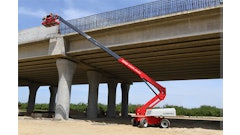Mast-climbing work platforms (MCWPs) enjoy widespread popularity on worksites across industries, and are used by thousands of operatives around the world each year. While high-level regulatory guidelines and oversight are paramount when considering such a prevalent and international work tool, it's also important not to lose focus on those at the front line and the very serious consequences that improper MCWP installation and operation can cause.
Effectively functioning as workstations in the sky, MCWPs are relatively simple to operate in standard configurations compared with other forms of powered access. Providing a variable-height access across specific areas of structures above ground level, MCWPs were first introduced in the 1960s as a form of automated access for the construction industry. Now used for cladding, window replacement, refurbishment, cleaning and painting and much more, MCWPs facilitate efficient work on the facade of buildings. In fact, they offer significant time and cost savings over traditional scaffolding, using fewer operatives.
While MCWPs have a good safety record in general compared to other forms of powered access, when something of that size and height fails, it is a major event and can lead to severe, if not fatal, injuries for operators and bystanders. In 2015, for instance, there were a spate of MCWP accidents in North America - tragic events in Raleigh, NC and Toronto, which brought home the importance of proactive inspection of equipment, safe operation and ongoing training.
Operators should not only be properly trained on how to work safely with an MCWP, they should be familiar enough with the controls and installation processes to be able to spot when an MCWP could be dangerous to use, for instance, due to post-installation alterations, or adverse weather conditions.
As well as use of the most up-to-date-equipment, comprehensive operator and installer training, and thorough daily and pre-use inspections are vital to safe work with MCWPs. Full knowledge of controls, including the drive unit and how to perform an emergency descent, controlling stability, dismantling, transport and installation are also crucial.
Cultural barriers to safety
But with all the regulation, training and oversight available, cultural perceptions can still block safety improvements at the final hurdle. Safety briefings on every jobsite should include clear stipulations that workers will not be penalized for highlighting potential risks and safety concerns, even if investigating this holds up work, but rather this proactive behavior is encouraged and seen in a positive light.
Safety culture varies from country to country, and even state to state, so clear communication is key – this means going back to the basics, such as ensuring safety information is communicated in the right language, for instance. Key to this is also ensuring that trained operators feel empowered to say “no." If operatives and installers are not happy with the set-up of the MCWP, their foreman or supervisor must be open to listening to and tackling these concerns, and never apply pressure to continue a job regardless.
Stop unauthorized use
Since MCWPs can be on a jobsite from start to finish, many different workers will potentially want to use them for a variety of tasks. However important it is that they get the job done, stopping unauthorized MCWP usage must take priority and access to the platform must be limited to trained operators only.
The technology does exist to enable this – IPAF’s machine-readable Smart Powered Access Licence (PAL) card is issued as standard to operators who have passed MCWP training, and installing card readers on machines is simple and cost-effective. This way contractors are taking the necessary steps to ensure the safe, authorized use of MCWPs throughout the duration of the contract.
The rental challenge
It is also crucial that rental companies use comprehensive handover certificates detailing how an MCWP was installed and disassembled. Rental companies should also make clear that once installation is finished and the MCWP has been inspected, operators should not make any alterations. And if changes are required, for instance with anchor points or outriggers, properly trained operators and installers should undertake this work, and the equipment should be fully inspected before being used again.
When considering which MCWP to invest in, rental companies should choose reputable manufacturers and ensure that their in-house team is highly skilled in providing complex solutions, offering a range of models to cover all sorts of projects including asymmetric and multi-deck configurations. Good manufacturers will help with training on operational use and installation, and can train rental companies in how to set up combined solutions.
The best rental companies also offer regular visits to open projects, inspecting MCWPs in use and ensuring that no unauthorized alterations have been made. Some industry commentators have suggested that local authorities introduce a third-party inspection program, carried out by an independent engineer, to ensure that an MCWP has been correctly installed on site prior to use.
Time for overload sensors?
Overload is a key risk of MCWP operation - MCWPs are generally not equipped with overload sensors, and their capacity is calculated according to how they have been configured and installed. At the very least, a load chart should be attached to the machine, positioned to be within operator sight during use, and ideally including other reminders about loads, including the need to maintain an even load distribution on the platform at all times.
Since correct loading is central to safe MCWP operation, it makes sense that manufacturers consider technology that actively monitors loads, and prevents the machine from functioning if overloaded beyond rated capacity. Load sensing technology has been present in the powered access and wider construction equipment markets for many years now, and is becoming more cost effective every year. Similarly, technology for monitoring wind force should also be offered for MCWPs – ideally either fitted as standard, or retrofitted to older equipment.
As the industry moves forward and new models are introduced, manufacturers must also continue to provide robust and clear guidance on all new models and updates for MCWP installers, operators and demonstrators.
Regulatory updates
Change is coming to the MCWP market in terms of updates to American National Standards Institute (ANSI) and Canadian CSA standards, which broadly agree with each other. The ANSI standards for MCWPs and Transport Platforms, A92.9 and A92.10 respectively were reaffirmed at their last review, but are at least two years away from a full review.
So, while it will be a few years yet before any unified North American updates filter through, it is to be expected that these will continue to be brought in line with European standards, resulting in a picture that looks more like global standards commonality for the first time. This can only be a good thing for clear and concise communication of safety dos and don’ts across the market – from manufacturers to end users and renters. As well as making it simpler for manufacturers to service the global market with single product lines, unified standards also raise the bar for health and safety across the industry.
Celebrating a safety focus
IPAF MCWP Committee convenor Romina Vanzi said, “When installed and used correctly, MCWPs are as safe or safer than other forms of powered access or scaffold, and they can offer safety, productivity and ergonomic benefits.
“Promoting the safe and effective use of powered access worldwide is our mission at IPAF, and we recognize that a key aspect to this is empowering workers and operators on the ground to know what best practice looks like. Dismissive attitudes towards safety on site can undo all of the hard work and training that have come beforehand, so we are calling on everyone in the industry to foster a climate that encourages safety reporting and celebrates those workers and operatives who highlight concerns and work to alleviate them.”
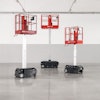

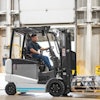
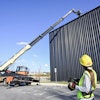
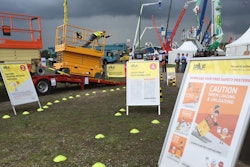
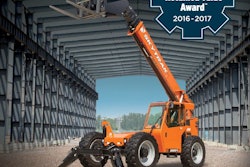
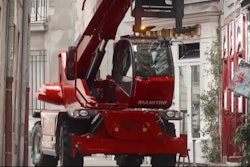

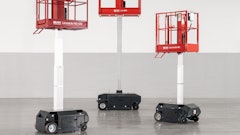


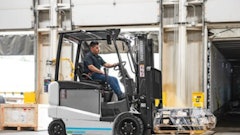
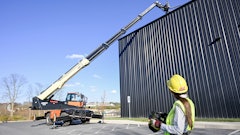
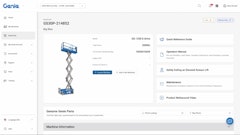
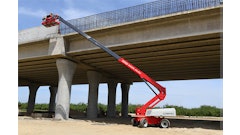
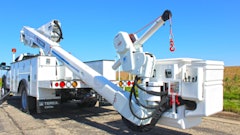
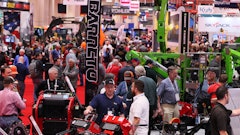
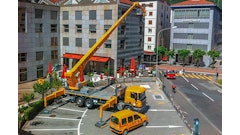
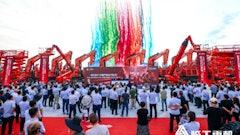
![Building Angled Sm Edit 6050b8d213f1b[1]](https://img.forconstructionpros.com/mindful/acbm/workspaces/default/uploads/2025/09/building-angled-sm-edit6050b8d213f1b1.Ygq5aAos3b.png?ar=16%3A9&auto=format%2Ccompress&crop=focalpoint&fit=crop&fp-x=0.53&fp-y=0.23&fp-z=2&h=135&q=70&w=240)
